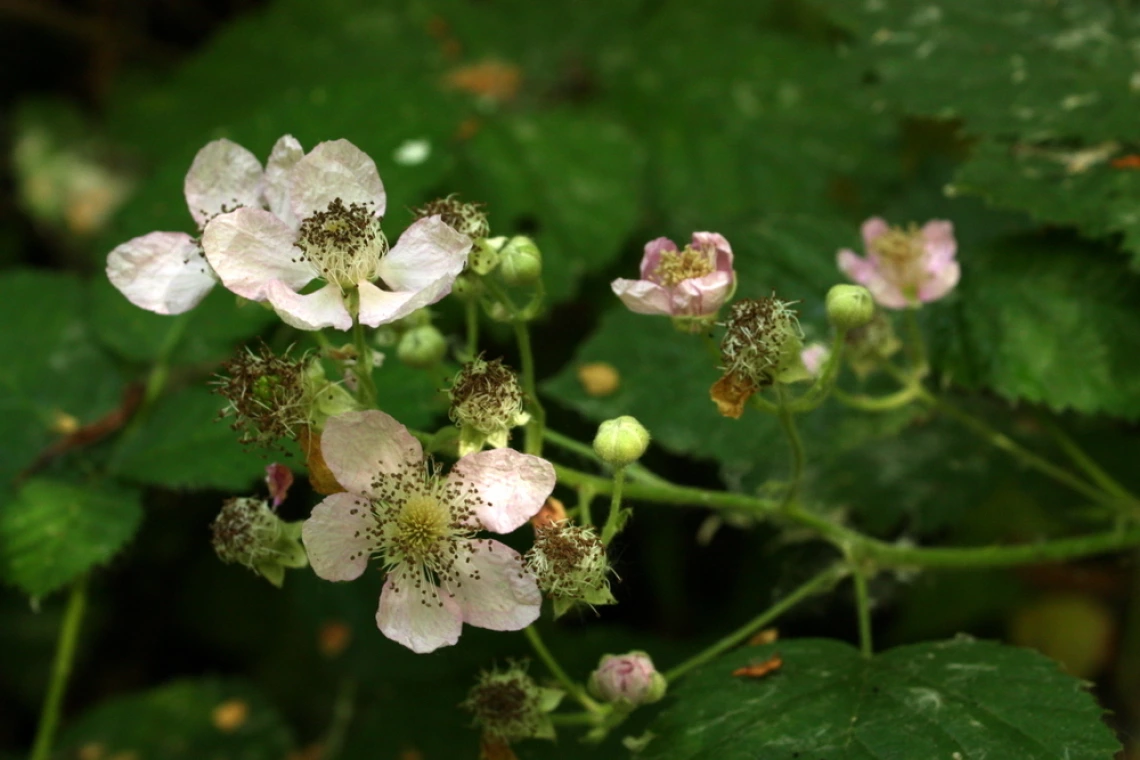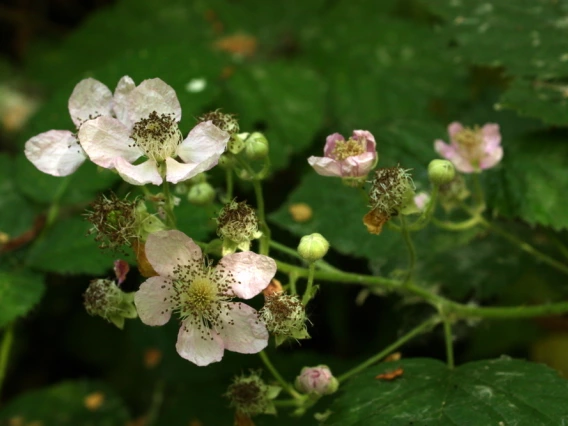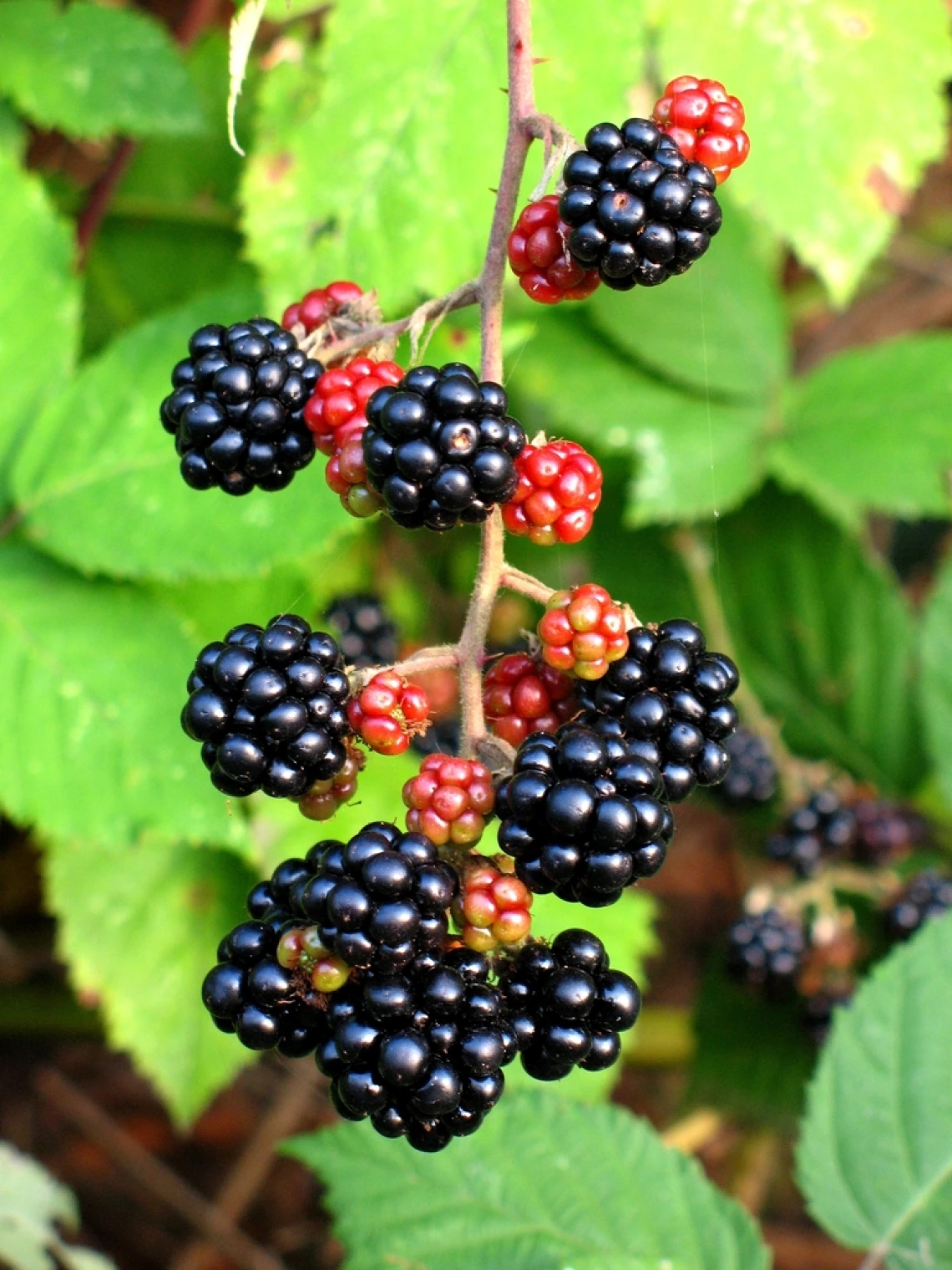Image

flowers
Common Name(s)
Himalayan blackberry
Armenian blackberry
Scientific Name
Rubus armeniacus
Family
Rose family (Rosaceae)
Reasons for concern
Himalayan blackberry grows quickly and outcompetes native species, especially in fragile riparian environments. Their large thickets hinder wildlife movement. Himalayan blackberry also produces large amounts of dry litter that fuel dangerous fires.
Classification
Non-native
Botanical description
Woody, prickly shrub with dark green serrated leaves and black fruits
Leaves
Dark green oval leaves with serrated borders, 1-5 inches long, can be found in groups of 3, 5, or 1 per smaller branch, whitish coloring on the back sides
Stem(s)
Reddish-brown ribbed stems up to 15 feet tall before arching over to form trailing vines up to 40 feet long, have claw like thorns with a thick base and curved tip
Flowers
White or pinkish, 5-petaled flowers with broad, 1 inch long petals
Fruit
Groups of small spheres that grow in clusters like blackberries, new fruits are red and hard, but ripe fruits are soft and black with a shiny appearance
Roots
Large, deep, woody root balls and rhizomes
Native to
Western Europe
Where it grows
Moist, well draining soils, riparian environments, disturbed areas like roadsides, fields, and residential areas
Lifecycle
Perennial
Reproduction
Vegetatively from rhizomes and root crown, from seeds
Weedy Characteristics
Seeds are easily spread by wildlife. Their root systems are very deep and difficult to remove fully. Himalayan blackberry can regrow and germinate after fires.
Look-alike Plants
Arizona Dewberry (Rubus arizonensis) can be distinguished by its lower stature to the ground, lighter colored leaves, and no white underside. Its leaves are in groupings of 3.
Control Strategies
Remove the above ground portion of the plant to make removal of the roots and rhizomes easier. Glyphosate can be used. With either chemical or manual removal, repeated treatment is necessary.
References
- http://www.pnwplants.wsu.edu/PlantDisplay.aspx?PlantID=73
- https://en.wikipedia.org/wiki/Rubus_armeniacus
- https://www.fs.usda.gov/database/feis/plants/shrub/rubspp/all.pdf
- https://www.nps.gov/grca/learn/nature/invasives.htm
- https://blogs.cdfa.ca.gov/Section3162/wp-content/uploads/2022/04/Rubus-bifrons-Himalayan-blackberry-PRP-for-posting.pdf
- https://blogs.cdfa.ca.gov/Section3162/wp-content/uploads/2022/04/Rubus-bifrons-Himalayan-blackberry-PRP-for-posting.pdf
- https://www.cabidigitallibrary.org/doi/10.1079/cabicompendium.116780





